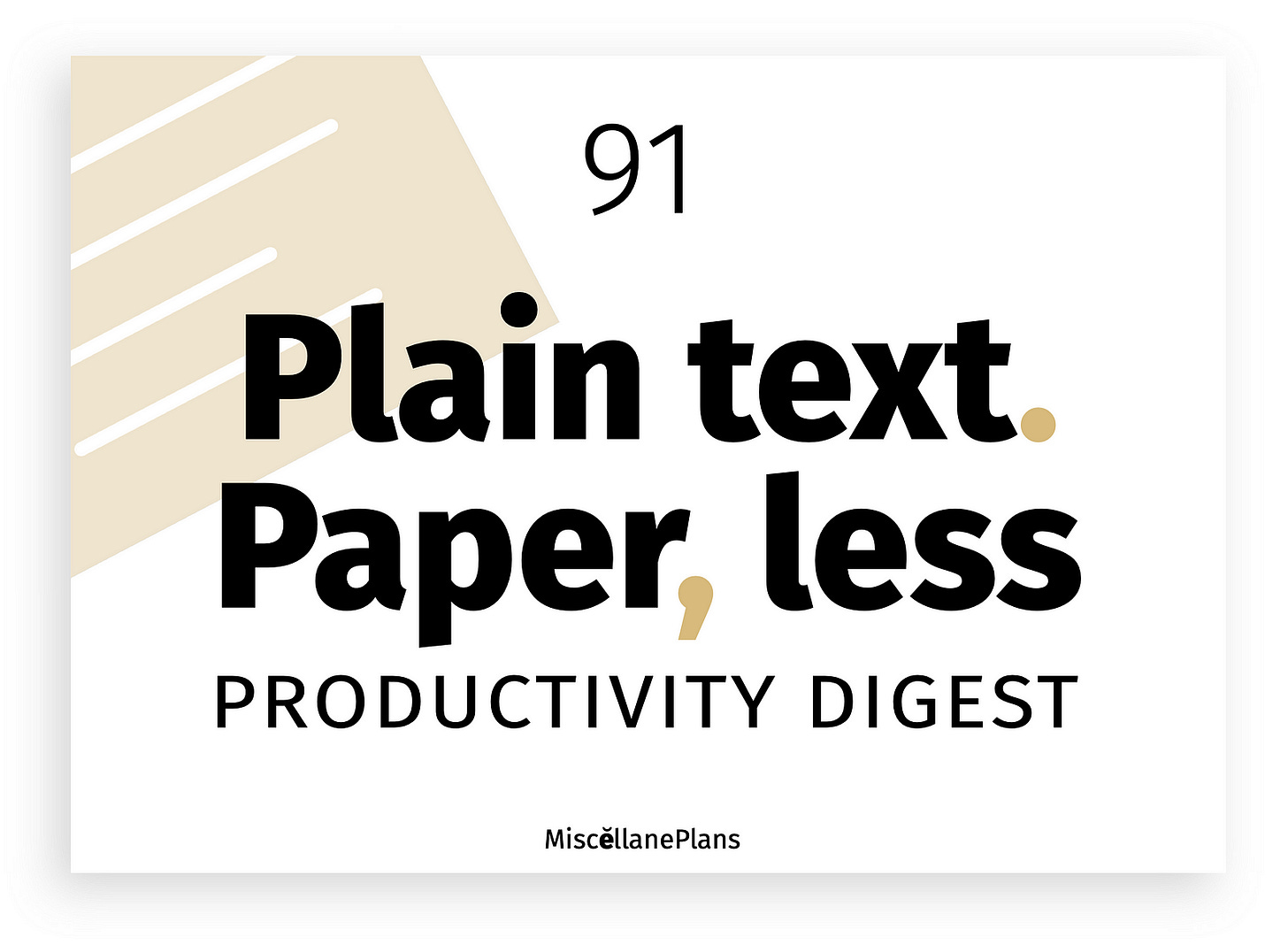PTPL 091: I'm Using One Big Text File in Obsidian as a Digital Bullet Journal
It's a perfect companion to my discbound paper notebook
This week I talk about how using a physical notebook is shaping and simplifying my (Markdown) daily note template, and how One Big Text File is a great option for capturing thoughts and ideas in a plain text Bullet Journal.
There’s no AI input here; all words 100% human made. Non-subscribers are welcome to read for free (Medium Friend link).
Punctuation Trivia
Punctuation used to be about pauses, much like rests in music, rather than legibility. Usage practices were a hotly debated topic in the 19th Century. Read more
Using a Bullet Journal is profoundly changing my daily notes
It’s strange to see parts of my plain text planner fall into disuse as I continue using a Bullet Journal (rather than daily notes in Obsidian) for capturing, or logging, thoughts and ideas as they occur.
There’s no longer a need for the repeating list of daily tasks on my weekly note template, but I’ve decided to keep them around as a visual reminder, with no pressure to mark off the boxes each day. Tasks are now almost 100% managed on paper, and I’m really liking how that feels.
For the past few months my favourite part of the weekly note has been the embedded query showing all the files created or marked for review on that day. This is where I can review the ideas that occurred to me during the night, or at other times when my notebook wasn’t within reach.
And now these fingers are itching to write up exactly how it all works. This is the simple approach I was looking for several years ago, and I figure there’s someone out there who will get insights from it for their own system.
Yet even with that goal finally achieved, and despite not giving up my weekly note any time soon, I found my imagination captured last week by an idea I’d previously dismissed: the One Big Text File. Mike Grindle calls it the lazy man’s PKM; I call it my OBTF, or plain text Bullet Journal.
The One Big Text File experiment has begun!
I’m seven days in to a new personal experiment: One Big Text File (OBTF) for everything. It’s a concept I’ve seen, been intrigued by, and dismissed several times over the past few years.
Mike’s recent article on the topic sparked something different in me this time. I knew I was ready! (Read it on Medium, or on his blog)
The concept is this:
Write everything you’d normally put into a digital daily note into one text file, and separate out sections as needed into additional files. People like William Hern and Jeff Huang do it differently from Mike, from each other, and from me, which is as it should be.
I’ve been applying Bullet Journal principles, marking each entry with one of the following (ignore the actual bullets at the start of each line):
N. This is a note; something I want to remember
T. This is a task; something I want to do in the future
E. This is an event; something that happened today
Why use letters as bullets, rather than symbols?
The OBTF is where I capture ideas when I’m not near my notebook, so I’ve made the ‘bullets’ as seamless as possible to enter on my phone. Letters are easy to remember, and the addition of a period (double-tap space bar) automatically capitalises the start of the actual entry.
Searching for a symbol, no matter how conveniently placed, always takes me longer than quickly tapping N for note, followed by two quick taps of the space bar. It’s quick and easy to do on my phone when an idea strikes, without requiring additional time/brain power that might cause the idea to flee my post-menopausal brain before being captured.
Here are some additional bullets (once again, ignore the actual bullets at the start of each line):
C. This is a communication note, like an email, social media post, text message
R. This is a reference note, like the hex code for non-repro blue
#a4dded→ This task or note has been migrated to somewhere else; eg. paper notebook, task manager, its own file
<. An event that's been scheduled into my paper future log, or digital calendar
X. This task has been completed
xx. This task is now irrelevant
Another reason for placing a period after bullets is to make it easier to search for specific note types. I don’t type in capitals, so I’m rarely if ever going to find N. used for anything other than a bullet.
I’d wanted to use > instead of an arrow → for migrated entries, but that one’s already taken by Markdown. Rather than escaping it as/>, which requires typing an extra symbol anyway, I settled on the arrow. Setting up text replacement on the iPhone keyboard has made it fast to type.
Quiz time
If I knew how to place a proper quiz at the bottom of this article, it would look like this:
a) I love this idea! OBTF, here I come!
b) Interesting! I have questions
c) Great idea for some, but I prefer my current note-capture system
d) Nope, not for me
The OBTF isn’t for everyone. If it doesn’t strike a tuneful chord in you today, I’d recommend leaving it alone until it does.
No AI input: all words 100% human made. I’m on a journey to finding a new home for this blog, currently exploring Wordpress as the most affordable option.
Download productivity goodies (including a soon-to-be-updated Obsidian Planner demo vault) here.


